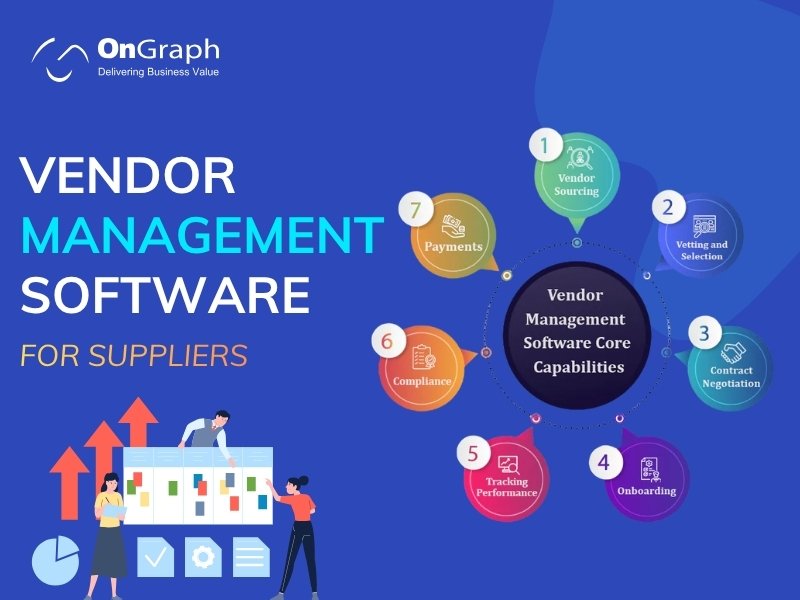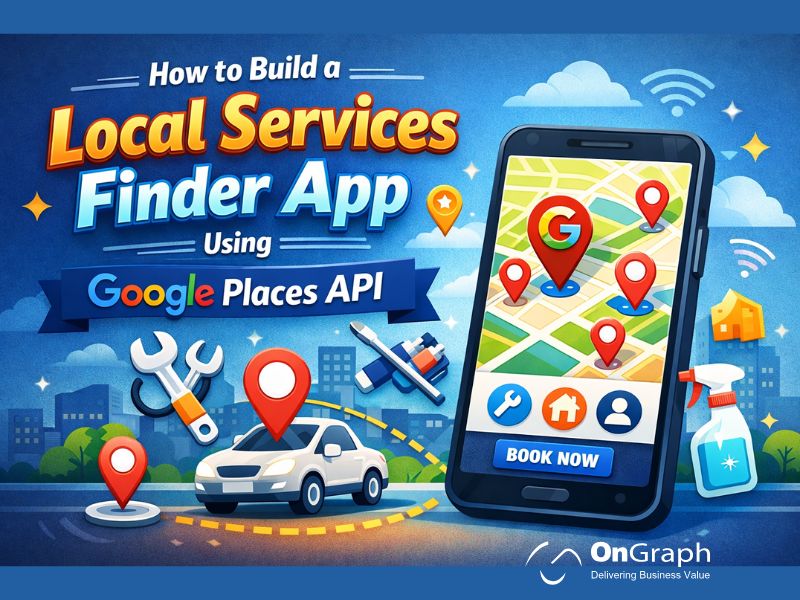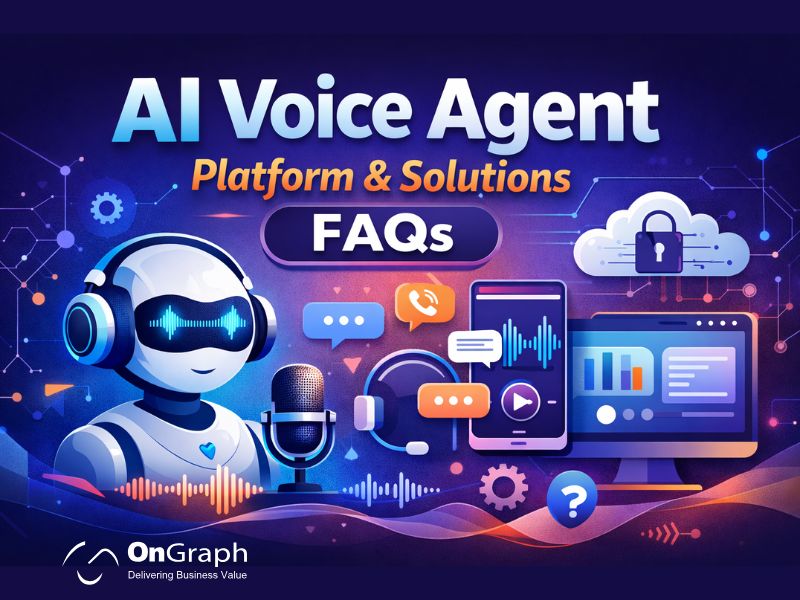In this article
- The Growing Importance of Vendor Management Software
- What Is Vendor Management Software for Suppliers?
- Core Features of Modern Vendor Management Software
- Types of Vendor Management Software
- Understanding Vendor Management Software Pricing
- Key Benefits of Vendor Management Software for Suppliers
- Case Study: How Automation Reduced 60% of Manual Vendor Work
- 2025 Trends Transforming Vendor Management Systems
- Measuring ROI of Vendor Management Software
- How to Choose the Best Vendor Management Platform?
- Conclusion
Managing dozens—or even hundreds—of suppliers can quickly become chaotic without the right systems. As businesses scale, spreadsheets and manual approval chains fail to provide the control, transparency, and risk management they need. That’s where Vendor Management Software for Suppliers steps in.
This software helps organizations streamline every aspect of supplier relationships—from onboarding and compliance to spend tracking and performance analytics.
A robust Vendor Management System (VMS) doesn’t just automate operations; it builds trust, reduces costs, and strengthens supplier collaboration.
In this detailed guide, we’ll explore the rise of Vendor Management Software, key features to look for, pricing insights, 2025 market trends, and real-life examples showing how companies are transforming their supplier networks using modern Vendor Management Platforms.
The Growing Importance of Vendor Management Software
A Rapidly Expanding Market
The demand for Vendor Management Software Solutions has skyrocketed since the pandemic exposed supply chain fragility.
According to Technavio (2025), the global vendor management software market is projected to reach $21.02 billion by 2029, growing at a CAGR of 18.6% from 2024–2029.
Additionally, The Business Research Company (2025) reports that the market will expand from $10.32 billion in 2024 to $11.93 billion in 2025, underscoring its rapid adoption across manufacturing, retail, logistics, and tech industries.
Why Businesses Are Shifting to Cloud-Based Vendor Management
Organizations want real-time collaboration, automated compliance, and instant visibility into supplier performance. Traditional spreadsheets or email-based vendor tracking systems simply can’t provide that.
By adopting Cloud Vendor Management Software, businesses benefit from:
- Centralized supplier databases
- Real-time dashboards
- Scalable integrations
- Remote access for multi-location teams
According to Mordor Intelligence (2025), 63.2% of vendor management platforms are now cloud-based due to lower cost of ownership and faster implementation cycles.
What Is Vendor Management Software for Suppliers?
Vendor Management Software for Suppliers is a centralized digital platform that helps businesses manage every phase of their supplier lifecycle—from onboarding and qualification to contract tracking and performance analysis.
It serves as the foundation for:
- Collecting and storing supplier data
- Automating vendor approvals and compliance
- Tracking vendor spend and KPIs
- Reducing operational risks and audit errors
Whether it’s a global manufacturer or a service-based enterprise, this software ensures that every vendor meets business, quality, and security standards.
Core Features of Modern Vendor Management Software
Supplier Onboarding and Verification
A robust Vendor Management Platform makes onboarding seamless. Businesses can capture tax documents, bank details, certifications, and compliance checks—all within one interface.
Automated verification (such as KYC or PAN validation) ensures accuracy and compliance.
Example: A retail brand onboarding 500 new vendors used a cloud-based onboarding system and reduced setup time by 45%, saving hundreds of hours monthly.
Spend Tracking and Cap Alerts
Companies often overshoot supplier budgets due to a lack of tracking.
Vendor Management Tools offer features to set monthly or quarterly caps per supplier. Automated alerts trigger at 50%, 70%, 90%, and 100% utilization.
Result: This not only prevents overspending but also improves financial discipline across supplier portfolios.
Supplier Performance Management
Performance dashboards are central to Supplier Management Software.
You can set KPIs such as:
- On-time delivery percentage
- Product quality score
- Response time
- Contract compliance rate
The software then generates automatic reports and visual charts, allowing procurement teams to make informed renewal or termination decisions.
Risk and Compliance Monitoring
Regulatory compliance is non-negotiable today.
The best Vendor Management Software includes risk scoring, contract audits, document expiry alerts, and fraud detection.
For enterprises working with cross-border suppliers, compliance with standards like ISO 27001, GDPR, or SOC 2 becomes easier through automation.
Integration Capabilities
The latest Enterprise Vendor Management Systems easily integrate with ERP (SAP, Oracle), CRM (Salesforce, HubSpot), and accounting tools (QuickBooks, Xero).
APIs and webhooks ensure smooth data exchange, eliminating manual duplication.
Analytics and Predictive Insights
Predictive analytics helps forecast supplier performance, identify risks early, and benchmark vendor costs.
In 2024, 63% of new vendor management platforms introduced advanced analytics and AI-powered features for supplier insights (Business Research Insights).
Types of Vendor Management Software
| Type | Description | Best For |
| Cloud Vendor Management Software | Hosted online, offers scalability, automatic updates | SMEs & global enterprises |
| On-Premise Vendor Management System | Installed on internal servers, offers higher customization | Regulated industries |
| All-in-One Supplier Management Software | Combines onboarding, contract, spend, and risk modules | Mid- to large-scale organizations |
| Niche Vendor Management Tools | Specialized tools for one purpose (e.g., compliance or quoting) | Small teams or startups |
Understanding Vendor Management Software Pricing
Pricing models vary depending on features and organization size. Here’s a breakdown of typical Vendor Management Software pricing options:
| Pricing Model | Details |
| Subscription-Based (SaaS) | Monthly/annual fee per user or per supplier; common in cloud platforms |
| Per Transaction | Based on the number of vendor transactions or project bids |
| Tiered Modules | Pay for modules you use (e.g., analytics, risk, integrations) |
| Custom Enterprise | Tailored to large firms; includes integrations and training |
| Freemium | Limited version with optional paid upgrades for advanced modules |
Average Cost (2025 Benchmark):
- Small Business: $20–$80 per user/month
- Mid-Size Firms: $300–$800/month
- Enterprise: $2,000–$10,000/month
(Source: SoftwareSuggest 2025 Market Report)
Key Benefits of Vendor Management Software for Suppliers
1- Improved Supplier Transparency
Gain 360-degree visibility into supplier performance and risks in real time.
2- Cost Optimization
Automated alerts and analytics prevent duplicate payments and over-budget spending.
3- Faster Onboarding
Cut supplier setup time by 40–50%, leading to quicker project starts.
4- Risk Reduction
Minimize compliance errors through continuous monitoring and audits.
5- Enhanced Collaboration
Secure portals allow suppliers to update documents and communicate directly with managers.
6- Better Decision-Making
Real-time dashboards give procurement leaders the insight to renegotiate or consolidate vendor contracts.
Case Study: How Automation Reduced 60% of Manual Vendor Work
A logistics company in Europe managed 250 active suppliers through spreadsheets and emails. They faced delayed payments, missed compliance deadlines, and inconsistent supplier data.
After implementing a Cloud Vendor Management Software, they achieved:
- 60% reduction in manual data entry
- 35% improvement in supplier response time
- 25% increase in on-time deliveries
- Full audit compliance with zero missed renewals
The system’s predictive alerts also flagged three high-risk vendors before contract renewal, preventing potential losses worth $75,000.
Streamline Your Supplier Management—Start Your Free Demo Today!
2025 Trends Transforming Vendor Management Systems
AI-Driven Supplier Insights
More platforms are adopting machine learning to forecast delays, price spikes, or compliance issues before they happen.
ESG and Ethical Sourcing
Companies now track sustainability, carbon footprints, and diversity metrics within Supplier Management Software.
Blockchain for Contract Security
Blockchain integration ensures tamper-proof vendor contracts and transparent payment records.
Unified Procurement Ecosystems
Integration of sourcing, vendor management, and contract tools creates an end-to-end Enterprise Vendor Management System.
Vendor Risk Intelligence Networks
Platforms are sharing anonymized risk data to benchmark suppliers globally—improving collective resilience.
Measuring ROI of Vendor Management Software
Businesses using Vendor Management Software for Suppliers report tangible ROI across:
- Operational Efficiency: Average 30–40% process time reduction
- Cost Savings: Up to 20% lower vendor spend through analytics
- Compliance: 70% fewer audit findings
- Supplier Engagement: 25% higher satisfaction due to faster issue resolution
These measurable outcomes make vendor management software one of the highest-ROI investments in modern procurement.
How to Choose the Best Vendor Management Platform
- Define Your Goals: Clarify if you want to manage cost, risk, or efficiency.
- Evaluate Scalability: Choose a platform that grows with your vendor base.
- Ensure Integration: It should connect with ERP, CRM, and project systems.
- Check Security & Compliance: Look for SOC 2, ISO, and GDPR certifications.
- Review Vendor Support: 24/7 technical support and onboarding assistance are must-haves.
- Compare Pricing Models: Calculate total cost of ownership over 3–5 years.
- Run a Pilot Project: Test with a few suppliers before company-wide rollout.
Conclusion
The future of supplier management is automated, data-driven, and cloud-based. A well-implemented Vendor Management Software for Suppliers doesn’t just simplify procurement—it transforms how businesses collaborate, innovate, and grow.
With increasing focus on transparency, compliance, and efficiency, investing in a modern Vendor Management System can provide a lasting competitive edge. As the market continues to evolve, organizations that act now will be best positioned to lead their industries in 2025 and beyond.
FAQs
Vendor Management Software for Suppliers is a centralized digital solution that helps businesses handle supplier onboarding, contract management, compliance, and performance tracking. It eliminates manual processes, reduces data errors, and offers visibility into supplier activities. By centralizing operations, companies ensure consistent standards across suppliers, saving both time and money. In today’s complex global supply chains, this software becomes vital for ensuring transparency, risk control, and audit readiness.
While the terms are used interchangeably, there’s a subtle difference:
- Vendor Management System (VMS) usually focuses on managing contractors, freelancers, or third-party service providers.
- Supplier Management Software deals more with physical goods suppliers and their logistics, quality checks, and certifications.
Modern Vendor Management Platforms now combine both aspects, offering a unified approach to manage all external relationships efficiently.
The main benefits include:
- Centralized supplier data and easy access for stakeholders.
- Real-time tracking of supplier performance, cost, and risk.
- Automated alerts for contract renewals, expirations, and spend caps.
- Improved supplier compliance and reduced audit risks.
- Enhanced collaboration between procurement, finance, and operations teams.
Overall, it creates a transparent, efficient, and accountable supply ecosystem.
Vendor Management Software Pricing depends on company size, supplier volume, and feature complexity.
- Small businesses: $20–$80/user/month.
- Mid-size companies: $300–$800/month for multi-module SaaS.
- Enterprises: $2,000–$10,000/month depending on integrations.
Implementation, customization, and support services may add 10–20% to annual costs. Most cloud solutions offer tiered or subscription-based plans, making them flexible for growth.
Industries such as manufacturing, logistics, IT services, healthcare, retail, and construction benefit the most. These sectors rely heavily on multiple suppliers and must ensure strict quality and compliance standards. Cloud Vendor Management Software is especially useful for global teams handling multi-currency transactions, supplier certifications, and complex logistics chains.
Vendor Management Software automatically tracks certifications, licenses, contract validity, and performance KPIs. It flags potential risks like expired documents, delayed deliveries, or low-quality scores. Some advanced systems also integrate AI-based vendor risk models, helping businesses predict which suppliers may underperform or cause disruptions.
These predictive features save companies from financial and reputational damage.
- AI & Predictive Analytics: For risk forecasting and supplier scoring.
- Blockchain Integration: For transparent and tamper-proof contracts.
- Sustainability Tracking: Measuring supplier ESG performance.
- Collaborative Portals: Allowing vendors to self-update data securely.
- Cross-Platform Integration: Merging sourcing, contracts, and performance dashboards into one ecosystem.
These trends show that Vendor Management Software for Suppliers is moving from a back-office function to a strategic driver of business efficiency and resilience.
About the Author
Let’s Create Something Great Together!
Latest Blog
















